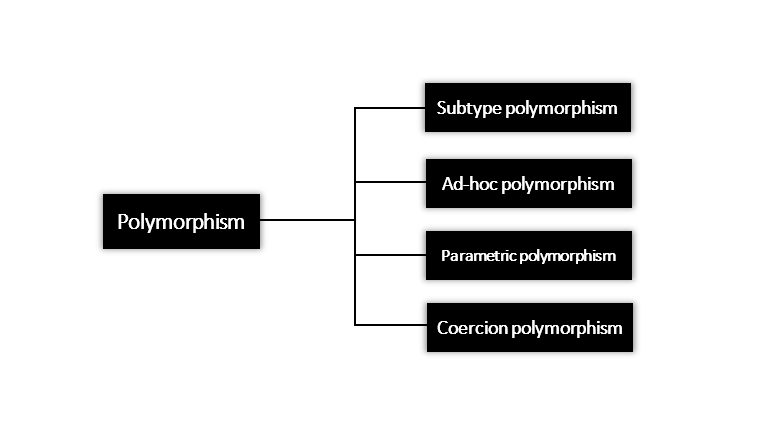What is Parametric Polymorphism in Java?
Parametric polymorphism Java is a term for code that is written without knowing the actual type of the arguments.
This piece’s code is parametric in the type of the parameters.
A field in one object could be of type Double, which wraps a double value.
The same field in another object could be of type String, and the same method could return a String.
Modern languages often use different kinds of polymorphism.

4 Kinds of Polymorphism in Modern Languages
1. Subtype polymorphism
Using the subsumption rule, subtype polymorphism gives a single term many types.
For example, a function with the argument can operate on any value whose type is a subtype of.
2. Ad-hoc polymorphism
It is usually used to describe code that looks polymorphic to the programmer but isn’t in reality.
Overloading is a common example. This is when the same function name is used for functions with different kinds of parameters.
3. Parametric polymorphism
Parametric polymorphism is when code is written without knowing the type of the arguments.
This type of code is called parametric code because it depends on the type of the arguments.
Polymorphic functions in ML and generics in Java 5 are just two examples.
4. Coercion polymorphism
Coercion polymorphism is when one type changes directly into another.
It happens when a type is changed into a different type. Before, polymorphism happened when different types interact with each other using the object class or functions.
What is Polymorphism in Java?
Polymorphism means “many forms,” and it happens when there are a lot of classes that inherit from each other.
As we said in the last chapter, inheritance lets us use the properties and methods of one class in another.
Polymorphism makes use of these ways to do different things.
How does Inheritance differ from Polymorphism?
Inheritance is creating a new class that has the same features as an existing class.
Polymorphism is being able to describe something in more than one way.
What are the benefits of using Java?
One of the best things about Java is that it can move easily from one computer system to another.
It is important for World Wide Web software to be able to run the same program on many different systems.
Java does this by being platform-independent at both the source and binary levels.
2 Types of Polymorphism in Java
There are 2 types of polymorphism in Java listed below.
- Compile time polymorphism – is achieved by method overloading. Method overloading permits two methods with the same name. This procedure occurs at compile time, hence it’s called Compile Time Polymorphism.
- Run time polymorphism – is the process of resolving a method call at runtime instead of at compile time. an overridden method is called by using the reference variable of a superclass.
This Java polymorphism is also called a static polymorphism and a dynamic polymorphism.
What is a parametric polymorphism example?
One example is adding a floating-point number to a list of integers.
Parametric polymorphism can be used in programming languages like Ada, Haskell, Visual Prolog, Scala, Java, and C#.
What is the use of parametric polymorphism?
Parametric polymorphism allows you to create generic functions that use generic data structures.
This ensures that values remain the same regardless of their type. Parametric polymorphism allows you to create generic functions that can be used with any data type.
This can help improve performance and ensure that data is always consistent.
How is parametric polymorphism implemented?
Parametric Polymorphism is a way to define types or functions that can be used with different types.
Generic is a way to create parametric types, where you can specify a type variable that stands for any type.
When you need to use a concrete type, you can either specify it explicitly or let the system infer it.
Which of the following polymorphisms is parametric?
Parametric polymorphism is a way to make a programming language more expressive while keeping full static type safety.
Parametric polymorphism allows a function or data type to handle all values in the same manner.
What is parametric overloading?
With parameter overloading, a single name can be used to refer to different kinds of objects.
Objects are instances of a single type expression over a large set of type variables.
What is implicit parametric polymorphism?
Implicit polymorphism can be thought of as a shortened version of explicit polymorphism.
The type check parameters and applications have been left out, and the language processor must figure out what they are.
If you don’t include type parameters, some type-indicating identifiers aren’t tied down. These are the type variables.
Does Python have parametric polymorphism?
Parametric is used in languages like C++ and Haskell that have generics and type inference.
Row polymorphism can be used in Typescript. These are the two types that Python has.
They are known as Subtyping and Duck typing.
Does C support parametric polymorphism?
In C++, parametric polymorphism is done with templates function templates define generic functions, and class templates define generic data types.
Summary
In summary, you have learned about Parametric Polymorphism in Java.
This article discusses four types of polymorphism in Java and the benefits of using Java for programming.
It also covers the use of parametric polymorphism and parametric overloading, as well as the implicit parametric polymorphism in Java.
Finally, it compares the parametric polymorphism features of Python and C.
I hope this lesson has helped you learn a lot. Check out my previous and latest articles for more life-changing tutorials which could help you a lot.
What’s Next
The next section talks about Abstraction. At the end of the session, you’ll know what is Abstraction all about in Java.
< PREVIOUS
NEXT >



